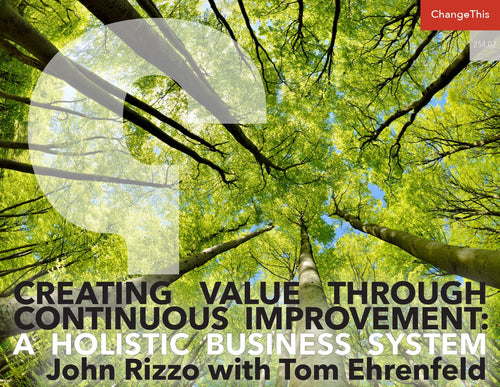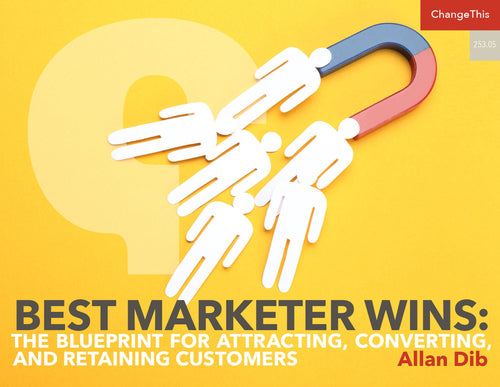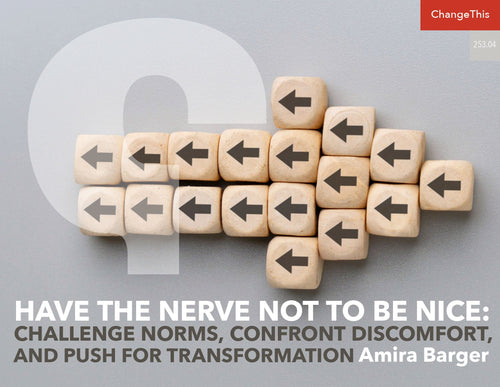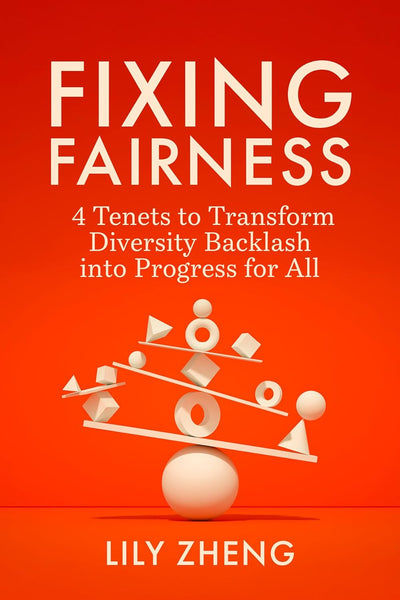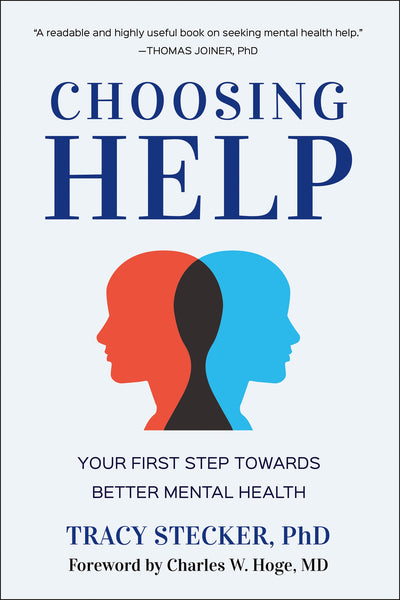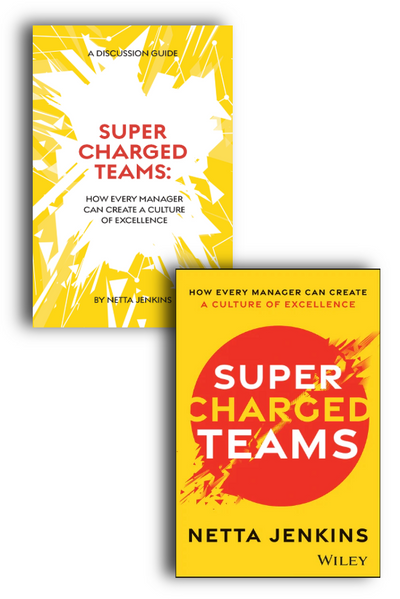Why the Conventional Wisdom on Business Longevity Gets It Wrong
As an aspiring entrepreneur, Neri Karra Sillaman ingested the classics of the business book genre for inspiration. As she built her family business, she found that many of the lessons they imparted weren't applicable to the context she was working in, and that the businesses they profiled were no longer succeeding. So she developed her own principles for business longevity, which she now shares with others as an Adjunct Professor and Entrepreneurship Expert at the University of Oxford, and in her new book, Pioneers.

As a refugee from a communist country, an entrepreneur, and a professor of entrepreneurship, I’ve long been fascinated by the question of business longevity: why do some brands survive and thrive when so many good ideas die young? Growing up in Bulgaria in the 1980s, where brands simply didn’t exist, meant that when I finally arrived in America in the late 1990s, I was utterly in thrall to these brash and bright companies that seemed to dominate the corporate world. And so I studied them, obsessively, to learn their secrets and see what I could take away to guide the building of my own brand: the business back in Istanbul turning discarded bits of Italian leather into bags and accessories that my family and I were dreaming of making into a global luxury brand.
Studying the literature on business longevity was at first a dizzying experience. Classics of the genre like Robert H. Waterman Jr. and Tom Peters’s In Search of Excellence turned my head with their promise that the principles of business success could be distilled into a blueprint that would work anywhere and anytime it was applied. It was thrilling to read, and its successors, like James C. Collins and Jerry I. Porras’s Built to Last, inspired me to believe that I, too, could build a business that would stand the test of time and achieve the iconic status of the designers whose work I loved. And when I found myself facing struggles, books like Collins’s Good to Great reassured me that the timeless principles of business success had now been revealed, and all I needed to do was follow them to make the leap from mediocrity to longevity.
But soon I came to feel like something wasn’t quite right. For some reason, the situations and strategies recommended by these bestselling classics didn’t seem to match up to the real-life scenarios that Neri Karra, the company, was facing on the streets of Istanbul. Companies like Philip Morris, Walmart, and Disney, it turned out, had little to teach a tiny, refugee-founded company in Turkey struggling with a lack of resources and forced to find ways to get the maximum value out of everything we had. (“You have to fry in your own oil,” my grandfather never tired of reminding me, which wasn’t advice that I could find from reading about the likes of 3M, IBM, or General Electric.)
Like me, it seemed like the authors of the famous bestsellers had been seduced by the glamor of the biggest brands and consequently were focusing on companies whose dayto- day dealings bore no relation to the struggles of startups equipped with little more than dreams and ideas. Could it be that the “timeless principles” of success were hard to apply when it came to the contexts in which my family and I, and millions of others like us, were trying to build our businesses?
The more I studied the business longevity literature and measured it against my own lived experience, the deeper my disillusionment grew. I started to realize that the bestselling classics, and much of the rest of the academic research, simply didn’t reflect what was going on in the real world. The deeper reasons for this disconnect slowly started to dawn on me, and they were not just due to the authors focusing on giant firms that inhabited different ecosystems. Researchers could only pontificate about firms’ long-term successes when they looked at companies that were started a long time ago. But the past, as L.P. Hartley famously wrote, is a foreign country, and it’s becoming more and more foreign by the day as the pace of change accelerates further and further. In a world characterized by constant disruption, how could we imagine that what worked even as relatively recently as the 1980s could be transposed into the twenty-first century?
And the flaws of the business longevity literature were not even just restricted to size and time. Space was an issue, too. Specifically, many of the studies, I came to realize, were overgeneralizing the experiences of particular places, confidently proclaiming, perhaps implicitly, that what worked in the U.S. Midwest would equally work in the Middle East. Similarly, stories from particular industries, from tobacco to tech, were being sold as universal answers to the challenge faced in very different contexts.
A perceptive piece by Nick Forster in the Journal of Business Perspective neatly summed up what I was realizing about the business longevity literature. Despite being well-written, inspirational, and seemingly full of solid advice, it was based on research with too many methodological flaws to be valuable. In addition to the problems related to size, space, and time already mentioned, Forster also skewered other fundamental flaws, ranging from a lack of longitudinal data to failures to account for external variables—factors like market conditions, changing technology, and geopolitics that have more influence over our businesses than we’d like to believe. As Forster concluded, inconsistent definitions of success led to conflicting recommendations about how companies should act. And because the books’ suggested strategies were rarely tested in different cultural or organizational settings, they left serious questions about the extent to which a route to success in one place can be replicated in another.
Taking a look around at what had happened to the companies lionized in the bestsellers in the years since they were held up as examples to the rest of us also produced some interesting insights. Of the 30 exceptional enterprises featured in In Search of Excellence in 1982, only 9 were performing above average 20 years later (and the same number were outright failures). Similarly, of the 18 firms featured in Built to Last in 1994, only 8 were performing above average in 2014. And of the 11 companies celebrated in Good to Great in 2001, only 6 were bigger in 2023 than they were when the book was written, 2 were in major trouble, and 1 had gone bankrupt, which didn’t seem all that, well, great (or even particularly good).
My general disillusionment with the business longevity research coalesced into a realization that it was selling easy answers and, in the process, propagating myths that could be, ultimately, harmful to budding entrepreneurs like myself. I’ve compiled a list of these myths below, alongside a description of the reality that each one obscures.
THE EIGHT MAIN MYTHS OF BUSINESS LONGEVITY
Myth 1: You don’t need a great idea to start a company.
Reality: While many researchers have argued against the importance of individual big ideas in business, reality tells a different tale. Compelling initial ideas that address specific market needs often form the cornerstones of long-lasting businesses. It’s true that adaptability and continuous improvement are indispensable for survival and growth, but dismissing the impact of the foundational idea oversimplifies the complexities of entrepreneurship. These original ideas, which stem from unique insights into unresolved problems, disrupt industries, redefine norms, and create lasting legacies.
Myth 2: Business longevity is about maintaining stability at all costs.
Reality: True longevity comes from balancing stability with adaptability to changing market conditions, customer needs, and technological capabilities. Many venerable firms have faced near-catastrophic challenges, with some teetering on the brink of bankruptcy before pivotal adaptations spurred recovery and renewal. My own research shows that business longevity isn’t about constantly finding calm waters in which to sail but rather about being able to navigate fierce storms; adaptability and evolution in response to challenges are key.
Myth 3: Only companies with large capital and resources can achieve longevity.
Reality: Endurance in business isn’t solely dependent on starting big. Many long-lasting companies have started small and grown over time through strategic decisions, customer loyalty, and organic growth. In fact, starting a business with an abundance of resources may not always be a good idea as it can stifle creativity. Small companies thrive by leveraging their limitations as strengths, using their small size to maneuver swiftly and respond to changes more effectively than their larger, more cumbersome counterparts.
Myth 4: Continual growth is a must for longevity.
Reality: Sustainable growth is more important than continual growth. Companies that focus on sustainable practices tend to last longer because they manage resources wisely, avoid overextension, and maintain financial health. Sustainable growth is strategic and measured, prioritizing long-term stability over short-term gains. It involves making decisions that are economically, socially, and environmentally responsible, ensuring that the business does not exhaust its resources faster than they can be replenished.
Myth 5: You must be successful in the market where your business is founded first
Reality: Historically, the big companies that tend to feature in the business longevity literature, like Coca-Cola, Procter & Gamble, and Levi’s, proved themselves first in their local markets before expanding internationally. But this no longer needs to be the case. Modern technology and the shrinking of the world have enabled firms to be global from day one (a phenomenon sometimes referred to as “born global”), making their abilities to build bridges across cultures and countries a business superpower.
Myth 6: The best companies are always the top players in their market.
Reality: Being a market leader is less important than having a solid strategy for resilience and adaptability. Many enduring companies thrive by carving out strong niches or comfortably maintaining a second or third position in their industries. These companies often benefit from “the giant’s shadow” effect, where being slightly less visible allows them more flexibility to innovate without the constant scrutiny faced by market leaders. Operating in niche markets can help companies develop deep expertise and strong customer loyalty.
Myth 7: Having more customers always results in a longer-lasting business.
Reality: The quality of relationships often trumps quantity. Businesses that last tend to focus on deepening relationships with existing customers through excellent service rather than just increasing customer numbers. This focus on customer satisfaction creates a solid foundation of loyal clients who are not only likely to continue doing business but are also inclined to become advocates for the brand. As online reviews become increasingly fundamental components of success, such advocates are crucial drivers of business growth.
Myth 8: Business longevity is mainly about competitive advantage in products or services.
Reality: Enduring success is as much about corporate culture and employee engagement as it is about products or services. Companies that invest in their people and foster a positive work environment are more likely to be innovative and efficient and thrive in the long term. These businesses understand that employees who feel valued and see their workplace as a supportive community perform better and remain with the company, reducing turnover and building institutional knowledge.
Excerpted from Pioneers: 8 Principles of Business Longevity from Immigrant Entrepreneurs by Neri Karra Sillaman (Wiley, 2025).
About the Author
NERI KARRA SILLAMAN, PHD, is a business consultant, public speaker, and academic specializing in entrepreneurship and business strategy. She is also a former refugee, immigrant entrepreneur, and founder of a multimillion-dollar global fashion brand. Karra Sillaman currently serves as an Adjunct Professor and Entrepreneurship Expert at the University of Oxford, where she mentors the next generation of business leaders.





